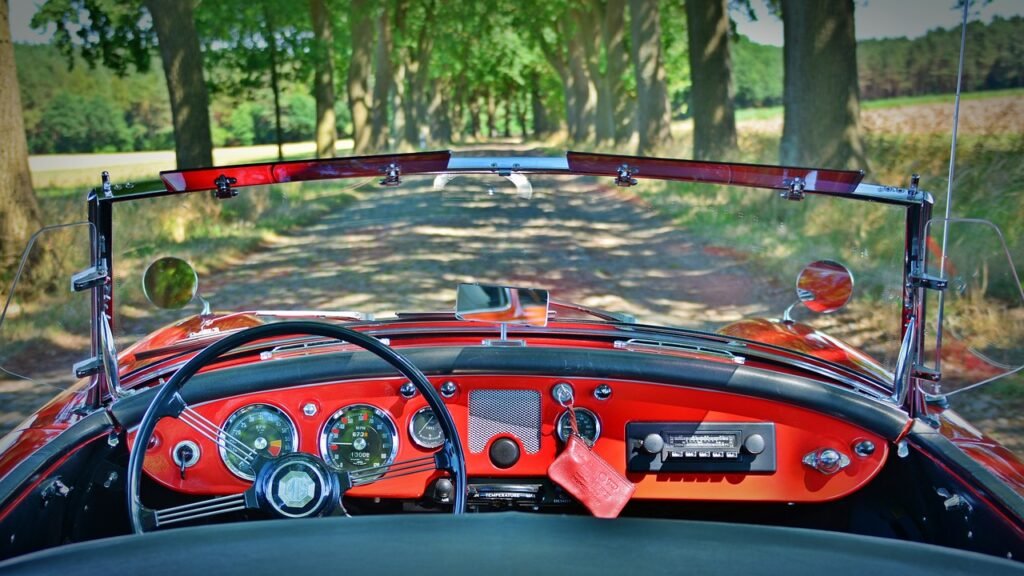
Uncover the Timeless Beauty of Classic Cars: A Journey Through
Step into the driver’s seat and imagine yourself cruising down the open road, feeling the wind in your hair and the thrill of the engine beneath you. But the beauty of classic cars goes beyond just the aesthetics. It’s a journey that takes us back to a bygone era, a glimpse into the history of automotive design and innovation.
Join us as we explore the stories behind these mechanical marvels, from the early pioneers who revolutionized the industry to the iconic models that still turn heads today. Gain a deeper appreciation for the craftsmanship and passion that went into creating these automotive works of art.
Uncover the timelessness of classic cars and immerse yourself in the world of automotive elegance. Get ready to be transported to an era where style and sophistication reigned supreme.
Classic cars have a rich history that spans over a century. It all began in the late 19th century when the first automobiles were invented. These early vehicles were primitive compared to what we have today, but they laid the foundation for the automotive industry. As technology advanced, so did the design and performance of cars.
During the early 20th century, the automotive industry experienced a boom as more people could afford cars. This led to the rise of iconic brands like Ford, Chevrolet, and Cadillac. The 1920s and 1930s saw the introduction of stylish designs, with luxurious interiors and powerful engines. Classic cars from this era, such as the Ford Model T and the Chevrolet Bel Air, are still revered today for their timeless appeal.
The post-World War II period brought about a new wave of classic cars. With the economy booming, car manufacturers focused on creating stylish and innovative designs. The 1950s and 1960s are often referred to as the golden age of classic cars, with iconic models like the Chevrolet Corvette and the Ford Mustang becoming symbols of American automotive culture.
What is it about classic cars that makes them so captivating? Is it their sleek lines and timeless designs? Or is it the nostalgia they evoke, transporting us back to a simpler time? Perhaps it’s a combination of both.
Classic cars have a certain elegance and charm that is hard to find in modern vehicles. They were built with care and attention to detail, using high-quality materials and craftsmanship. From the hand-polished chrome accents to the supple leather interiors, every aspect of a classic car exudes luxury and sophistication.
But it’s not just about the aesthetics. Classic cars offer a unique driving experience that can’t be replicated by modern vehicles. The sound of the engine, the feel of the steering wheel in your hands, and the thrill of the open road – these are the things that make driving a classic car truly special.
There are countless classic car models that have left an indelible mark on automotive history. From iconic sports cars to elegant sedans, each model has its own unique features and characteristics.
One of the most iconic classic cars is the Chevrolet Corvette. First introduced in 1953, the Corvette quickly became a symbol of American performance and style. With its sleek design and powerful engine, the Corvette set the standard for sports cars of its time. Over the years, the Corvette has undergone several transformations, with each model offering improved performance and cutting-edge features.
Another classic car that has stood the test of time is the Ford Mustang. Introduced in 1964, the Mustang revolutionized the automotive industry with its affordable price tag and stylish design. The Mustang became an instant hit, capturing the hearts of car enthusiasts around the world. Today, the Mustang is still a symbol of American muscle and is loved for its powerful engines and aggressive styling.
Restoring and maintaining a classic car is a labor of love. It requires patience, attention to detail, and a deep understanding of the vehicle’s history and mechanics. But the rewards are well worth the effort.
The first step in restoring a classic car is to assess its condition. This involves a thorough inspection of the body, interior, and engine. Once the condition is determined, the restoration process can begin. This may involve repairing or replacing parts, repainting the exterior, and refurbishing the interior.
Maintaining a classic car is equally important to ensure its longevity. Regular maintenance tasks include oil changes, tire rotations, and engine tune-ups. It’s also crucial to store the car in a safe and climate-controlled environment to prevent damage from the elements.
Buying a classic car can be an exciting and rewarding experience. However, it’s important to do your research and take certain factors into consideration before making a purchase.
First, determine your budget. Classic cars can range in price from a few thousand dollars to several million, so it’s important to set a realistic budget based on your financial situation.
Next, research the model you’re interested in. Learn about its history, performance, and common issues. This will help you make an informed decision and avoid any potential pitfalls.
It’s also recommended to get a professional inspection before buying a classic car. An expert can identify any hidden issues or potential problems that may not be apparent to the untrained eye.
Classic car events and shows are a great way to immerse yourself in the world of automotive elegance. These events bring together car enthusiasts from all over the world to showcase their prized vehicles and celebrate the beauty of classic cars.
One of the most prestigious classic car events is the Pebble Beach Concours d’Elegance. Held annually in California, this event attracts collectors, enthusiasts, and industry professionals from around the globe. The Concours d’Elegance showcases some of the rarest and most exquisite classic cars, with awards given for various categories.
Other popular classic car events include the Goodwood Revival in the UK, the Amelia Island Concours d’Elegance in Florida, and the Mille Miglia in Italy. These events offer a unique opportunity to see classic cars up close, meet fellow enthusiasts, and learn more about the history and heritage of these beautiful vehicles.
The market for classic cars has seen significant growth in recent years. As more people recognize the value and beauty of these vintage vehicles, prices have soared, making classic cars attractive investments.
When buying or selling a classic car, it’s important to understand the market dynamics. Factors such as rarity, condition, and historical significance can greatly impact the value of a classic car. It’s also advisable to consult with experts or appraisers who specialize in classic cars to get an accurate valuation.
For those looking to invest in classic cars, it’s crucial to do thorough research and seek professional advice. Classic cars can be a rewarding investment, but they also require careful consideration and management.
If you’re fascinated by classic cars, visiting a museum or collection is a must. These institutions are dedicated to preserving and showcasing the history and beauty of classic cars.
One of the most renowned classic car museums is the Petersen Automotive Museum in Los Angeles. With its extensive collection of vintage vehicles, the museum offers a journey through automotive history. From classic American cars to European sports cars, the Petersen Automotive Museum has something for every car enthusiast.
Other notable classic car museums include the Mercedes-Benz Museum in Germany, the Louwman Museum in the Netherlands, and the National Automobile Museum in the United States. Each museum offers a unique experience, with carefully curated exhibits that highlight the best of classic car design and innovation.
As our journey through the world of classic cars comes to an end, it’s clear that these vintage vehicles hold a special place in the hearts of enthusiasts and collectors. From their elegant designs to their powerful engines, classic cars captivate us with their timeless beauty and allure.
But classic cars are more than just machines. They are a testament to human creativity, innovation, and craftsmanship. They remind us of a bygone era, a time when style and sophistication reigned supreme.
So, whether you’re a seasoned collector or simply an admirer of automotive elegance, take a moment to appreciate the timeless beauty of classic cars. Step into the driver’s seat, feel the power of the engine, and let yourself be transported to an era where every drive was an adventure.
